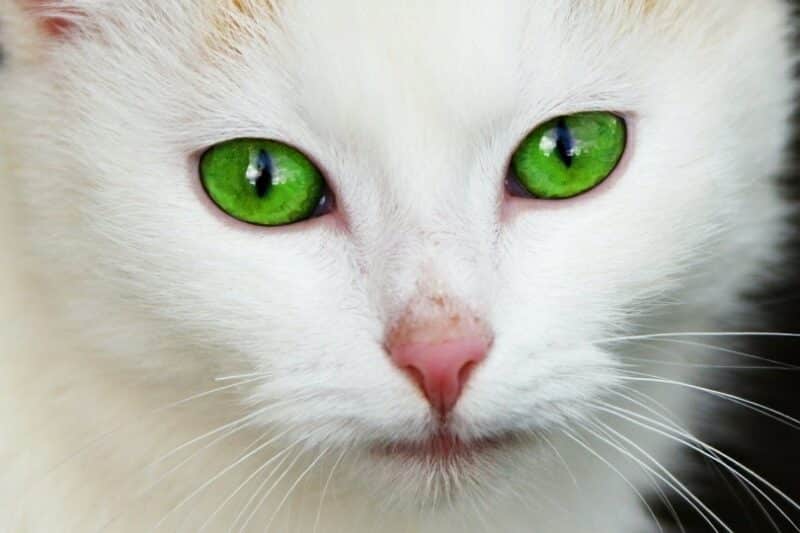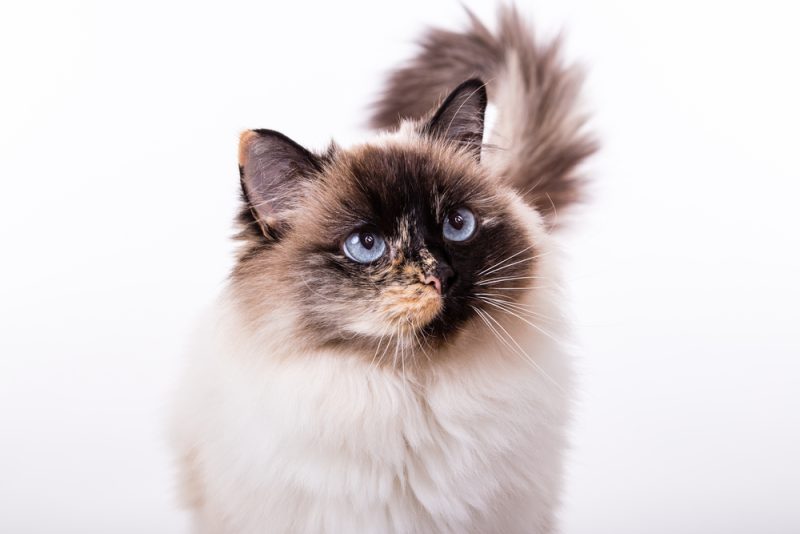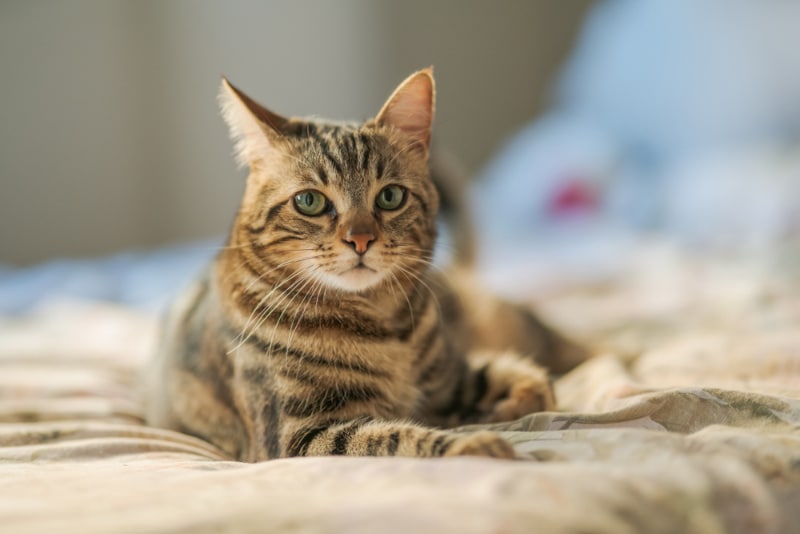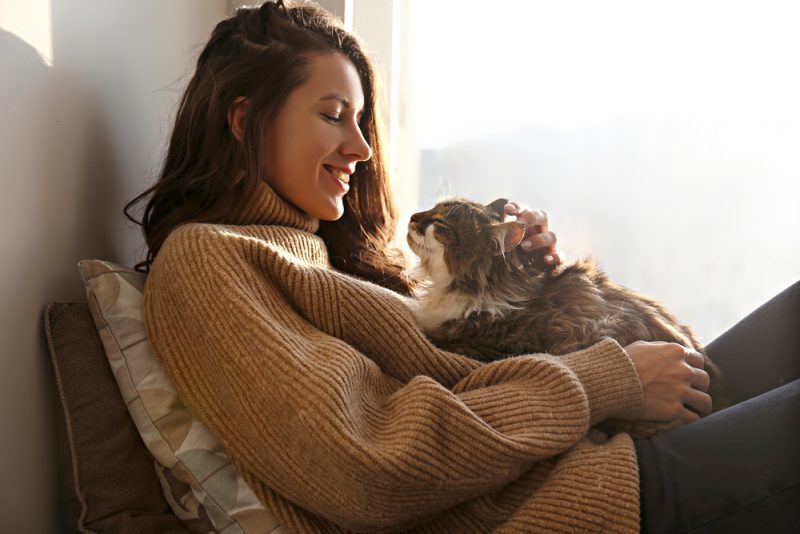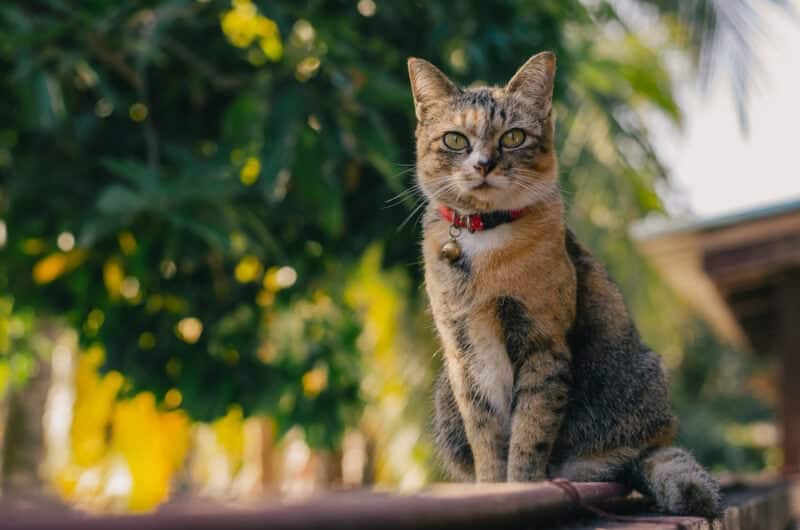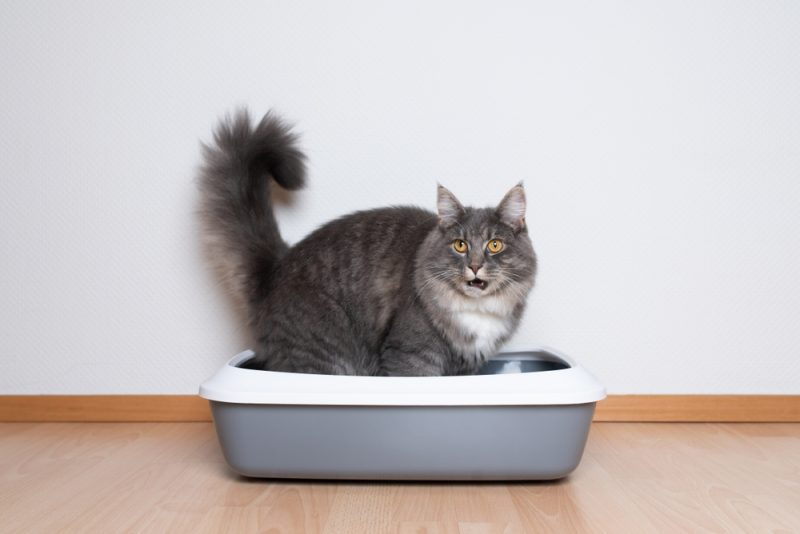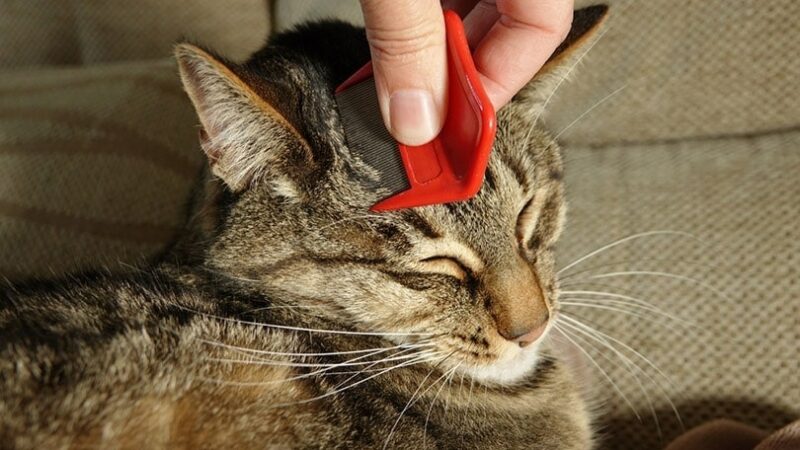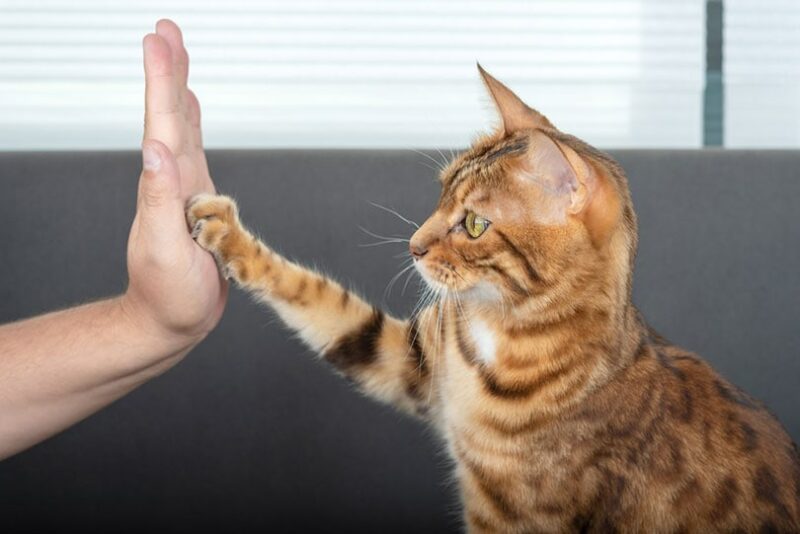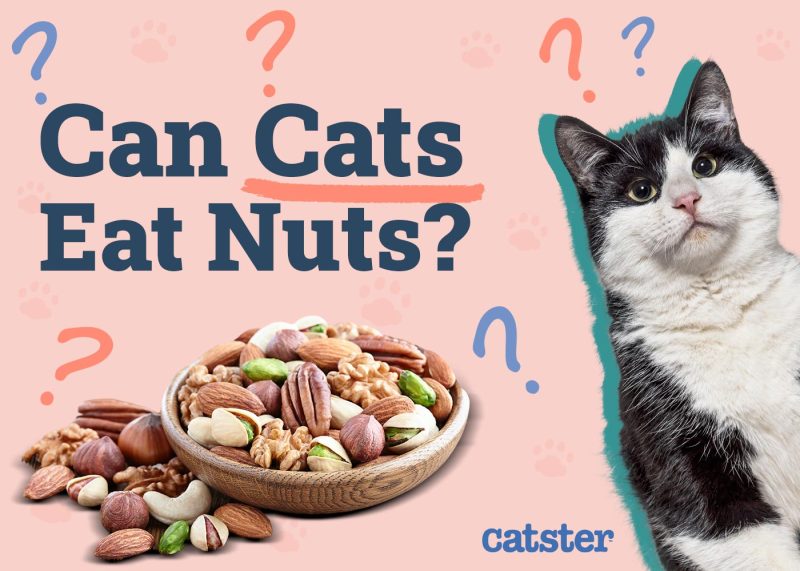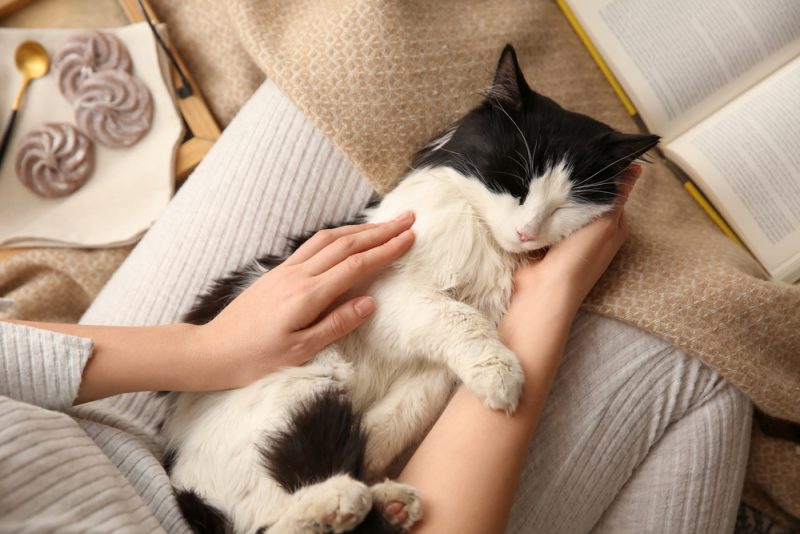In this article
View 4 More +Cats are obligate carnivores and get all the nutrition they need from eating other animals. In the wild, you won’t find cats eating fruits or vegetables. This might leave you wondering why you don’t see many cat foods listing pork as the main ingredient. So, can cats eat pork?
Yes, pork is safe for your cat to eat. Cats are obligate carnivores and pork is a good protein choice for them. In fact, some of the commercially available cat foods are pork-based. Feeding a little pork to your feline occasionally won’t cause any health problems. However, you will need to have some considerations. If you plan to feed pork to your cat as a treat on top of their normal food, read on to learn about the precautions you need to take to ensure it is safe for them.

Precautions to Take When Feeding Pork to Your Cat
While cats can eat pork, there are still a few precautions you need to take. Without the correct preparation, pork could harm your kitty.
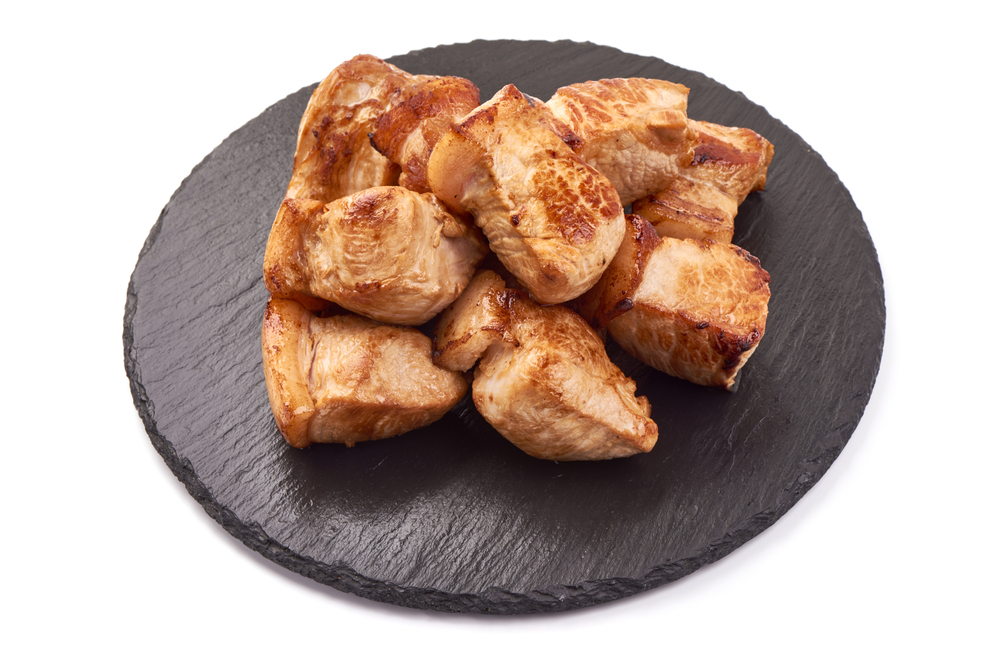
Remove All Bones
When pork pieces are cut, some of the bone edges remain as sharp hazards that might injure your cat or become a choking hazard. That’s why you’ll need to make sure that you carefully remove all the bones from any cut of pork you give your cat.
Cook Thoroughly
If you’re going to feed your cat pork meat, it is recommended that it is fully cooked before you give it to them. Pork is notorious for the transmission of the parasite Trichinella spirallis, which forms infective cysts in its muscle tissue. To prevent this it is recommended to cook meat to an internal temperature of at least 160°F (71°C) for ground meats and 145°F (63°C) for roasts. If you wish to feed it raw you should know that to effectively kill the parasite, the temperature and time are important. It is required to freeze the pork meat at 5°F (-15°C) which is way colder than normal domestic freezers for at least 20 days, or if you have access to a freezer that can go down to -22°F (-30°C)then you need at least 6 days. Since most pet owners do not have freezers that can get so low, the recommendation is to cook the pork before consuming it or feeding it to your pets.
Cooking also helps to ensure any pathogenic contaminating bacteria will die off making it safe for your cat.
Another risk when feeding raw pig to a cat is the Pseudorabies disease, also known as Aujeszky’s disease. This disease is caused by Suid herpesvirus 1 (SHV-1), the virus infects the central nervous system, respiratory system, and other organs of many mammals including cats. Pseudorabies disease is not very common but sadly infections are often fatal. Pigs and piglets are considered the natural reservoir of this virus as they are the only species able to survive this infection. By cooking pork meat you can effectively ensure you destroy this virus. Studies have found that freezing pork meat at -0.4°F (-18°C) for 18 days seems to inactivate the virus.
Feed in Moderation
Since cats need lots of protein and they eat a diet comprised mainly of meat sources, it seems counterintuitive that you would limit the amount of pork you offer your cat. The same rule doesn’t apply to chicken or turkey, so what’s different about pork?

Why Your Cat Should Only Eat Pork Occasionally
Pork isn’t the same as chicken or turkey, and there’s a good reason why you don’t see it being used as the primary protein source for many cat foods. Chicken and fish seem to be used in most commercial cat foods today, but why not pork?
There are two main problems with pork that make it a less viable option for cats. For these reasons, pork is less common in pet food and is considered to be best served as an occasional treat rather than a dietary staple.
High in Fat
Pork is much fattier than other types of meat. Chicken is remarkably lean, which is why it’s used as the primary protein source for so many commercial cat foods. But pork often has more fat. The proportion of fat in pork is usually higher in fat content than any piece of chicken therefore the caloric density is also much higher. For every gram of protein of pork you feed your cat, there will be more fat than if you fed the same amount of protein from chicken. Please keep in mind this is a very general concept as different cuts of pork and the kind of trim as well as the different parts of the chicken can contain different percentages of fat, therefore, the difference can be more or less obvious.
Feeding a diet that is higher in fat and calories to your cat very often will result in weight gain, and eventually, obesity, which is linked to many diseases such as a greater likelihood of developing diabetes in our felines.
Indoor cats aren’t getting much exercise. Most of them lead pampered lives indoors, where they rarely expend more energy than chasing around a laser pointer for a few minutes. If they consume too many calories from fat, it will take a long time for them to work it off with the minimal amount of physical activity they get.
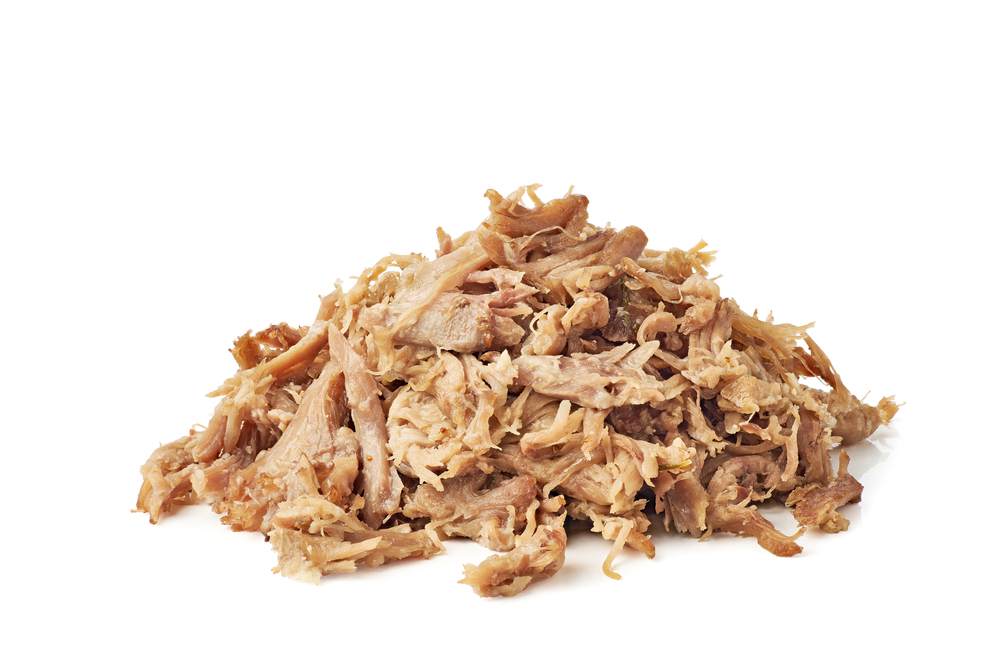
Production Cost
Another factor why pork is not as common as chicken as a protein base in cat food is its production cost, which is about double that of chicken.
A Note About Processed Products
Processed pork products such as ham sausages, bacon, and deli meats are some of the most common ways we consume pork regularly. Besides the higher-than-ideal fat content, such products contain preservatives sodium nitrite, and phosphates, which are potentially harmful to cats, especially if ingested in large amounts or if they suffer from preexisting conditions such as kidney disease. Our recommendation is to avoid feeding processed pork products to your cat, especially in large amounts or very frequently.

Benefits of Feeding Pork to Your Cat
So far, we’ve mainly discussed the dangers and downsides of feeding pork to your cat. However, it’s safe to feed a feline in moderation and even has some benefits for them to gain from it.
High Protein Content
As obligate carnivores, cats need to eat a lot of animal-derived proteins. It’s an essential part of their nutrition and is needed to keep all the systems within their bodies. Pork, like all meats, is comprised substantially of protein. However, as mentioned, there are leaner cuts than others and also leaner meat alternatives with higher protein and less fat content per gram, and they might be a better option for cats.
Loaded With B Vitamins
Pork contains many minerals and vitamins, particularly vitamins B6 and B12. B12 is an important vitamin for cats. It’s essential for the proper function of their nervous systems, immune systems, and digestive tracts.
A Source of Thiamine
Thiamine is an essential nutrient that cats need to consume in their diet to maintain their health. Pork is a source of thiamine and it contains more of this essential amino acid than any other meat, therefore it does provide nutritional benefits to felines.
Cats With Allergies or Sensitivities
Another great benefit of pork for cats is that it can be useful as an alternative protein source. If a cat is allergic or sensitive to other more commonly used proteins like chicken, turkey, or beef, then pork can be the ingredient to provide their food with the much-needed protein. Since pork is not an ingredient very commonly used in cat food, this change can work for cats presenting allergy signs.

While sharing human food with your cat is not always safe, we have a solution that will keep you both smiling. We've currently got a 40% discount to share on the HUMAN-GRADE premium cat food that ranked number #1 in our reviews! CLICK HERE & use code Catster24 to SAVE 40% on Smalls cat food!

What Pork to Feed Your Cat
If you’ve decided to feed your cat a bit of pork, you must know which cuts to choose. All cuts of pork are not created equally, and the one you pick will make a difference for your cat. You generally want to pick the leanest cuts and avoid fattier cuts like pork belly or processed products like bacon.
- Loin chops
- Loin roast
- Pork tenderloin
- Bacon
- Pork belly
- Pork shoulder chops
Reach out to a veterinarian for an advice if you would ever be unsure about any new addition to your cat’s diet.
Need veterinary advice but can't get to the clinic? Catster recommends PangoVet, our online veterinary service. Talk to a vet online and get the answers and advice you need for your cat without having to leave your living room — all at an affordable price!


Alternatives to Pork
As we’ve mentioned, there are several protein alternatives for your cat. They contain less fat and therefore have a higher protein content and may even contain beneficial nutriceuticals like Omega-3 fatty acids not found in pork.
Fish
Fish is loaded with protein and some varieties contain Omega-3 fatty acids which you can not find in pork products. Even better, you can catch fish fresh, so you know that nothing was ever added to the meat. Because nothing is ever perfect, you should keep in mind that some fish varieties are high in mercury content which is why it should also be fed to your cat with precaution.
Chicken
Chicken is cheap, lean, tasty, and packed with protein. Chicken is also one of the most cost-effective proteins to produce, that’s why it’s the primary protein source in so many cat foods. But it can still make an excellent treat when plain, boiled, or roasted chicken is served to your cat. Just make sure it’s fully cooked and has no skin or seasonings.
Learning about what your cat can and cannot eat is a crucial part of keeping them happy and healthy! Choosing a bowl to serve cat-friendly foods in is another important decision pet owners face. Satisfy the specific needs of your cat with the innovative design of the Hepper NomNom Cat Bowl. Learn why it’s our (and our cats!) favorite food and water dish here. At Catster, we’ve admired Hepper for many years and decided to take a controlling ownership interest so that we could benefit from the outstanding designs of this cool cat company!

Conclusion
Pork, like any other meat, is packed with protein and high in taurine content, which is beneficial for your cat. However, compared to other meats, pork is fattier, which is why it might not be the best treat option for your cat. Still, a little bit isn’t going to hurt and might make a tasty treat, as long as you choose a leaner cut and cook it very well. Do not add oils or condiments, and only serve it occasionally.
See also:
- Can Cats Eat Bacon? Vet-Reviewed Facts & FAQ
- Can Cats Eat Raw Pork? Vet-Reviewed Facts & FAQ
- Can Cats Eat Pork Rinds? Vet-Reviewed Facts & FAQ




